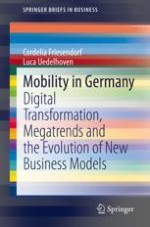Mobility in Germany is embracing market changes like never before. Megatrends, notably, digitalization, urbanization and sustainable thinking are driving Germany’s mobility transformation such that traditional players are rethinking their business models and new companies are constantly seeking market penetration. This book captures these changes in a holistic approach to depict Germany’s mobility transition driven by innovation. Beginning with an evaluation of the market environment and megatrends impacting mobility, the book compares and contrasts traditional mobility business models with those of the new entrants. Using business management techniques and a detailed survey on customer perspectives, this book equips mobility professionals, policymakers, entrepreneurs and researchers with concise, critical and up-to-date analysis of the developments in German mobility and provides valuable insights into new business models that offer user-oriented, futuristic and sustainable mobility solutions.
